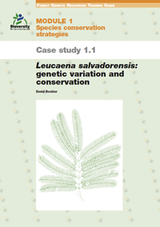
This case study presents information from multi-disciplinary research (ecological, genetic, socio-economic) on a little-known species that is endemic to Central America, but now found mostly on farmers’ land.
Students use the information to devise a conservation strategy for this threatened species on a country basis (either El Salvador, Honduras or Nicaragua), or from the global perspective of an international organization that supports conservation. This requires taking account of the patterns of genetic variation in the species, the forestry and socio-economic contexts of the different countries, and the combination of in situ, ex situ or other conservation measures.
Suits 2-4 groups of 4-5 students per group. Each group devises a strategy for a different country and one works as an international conservation organization.


